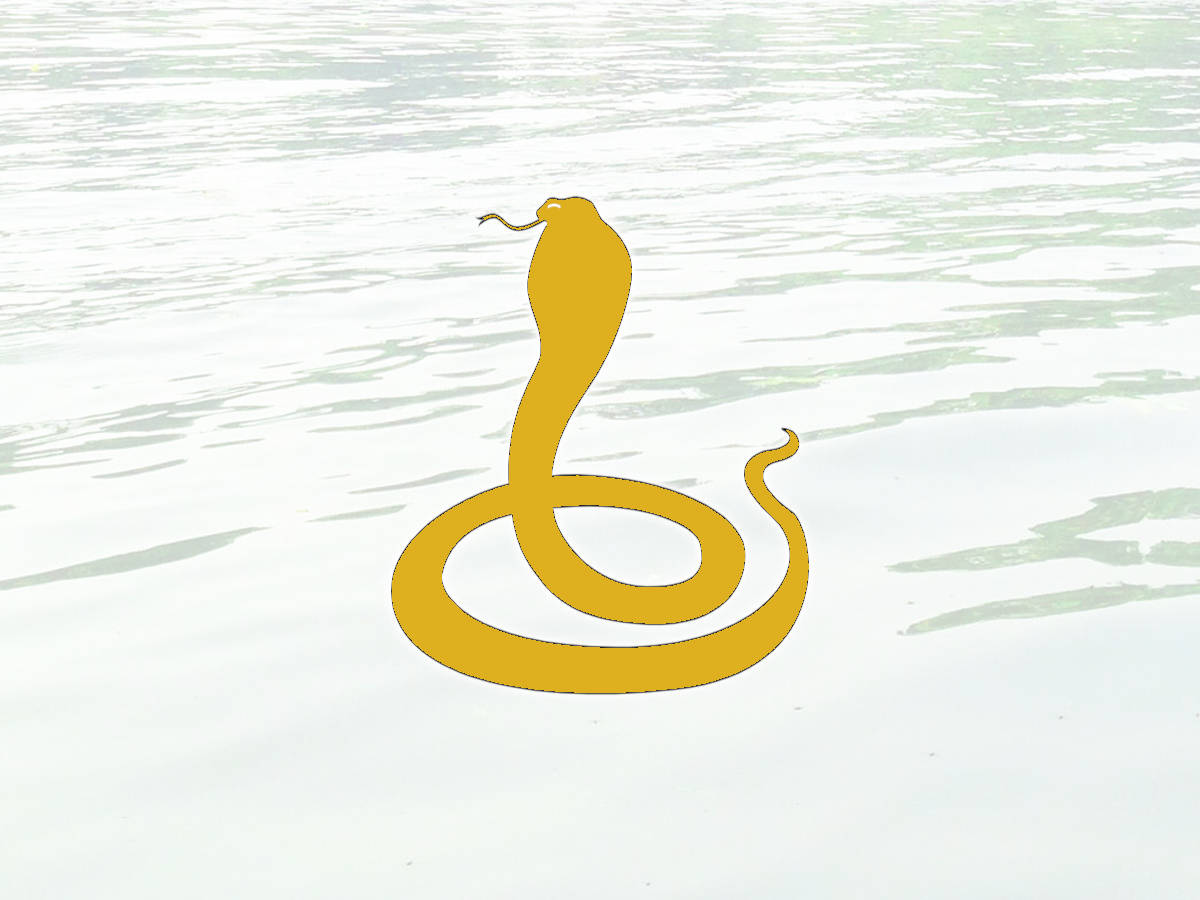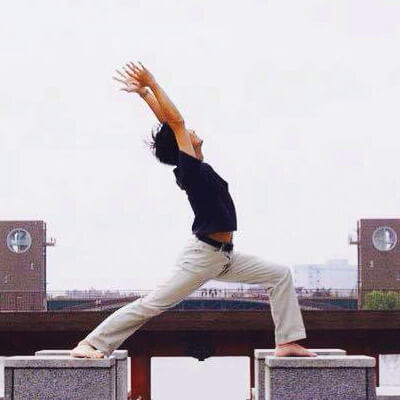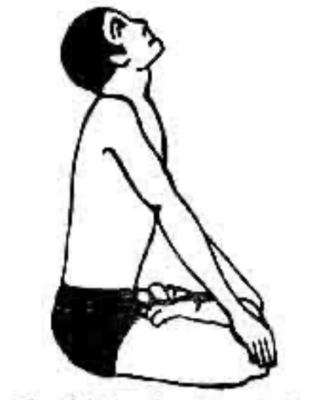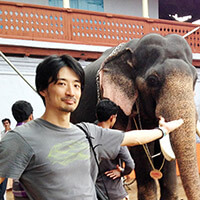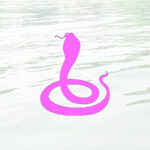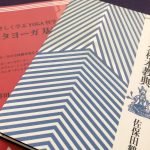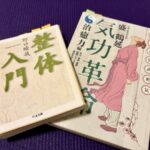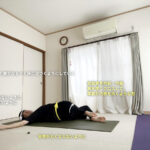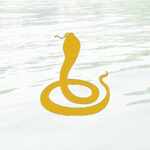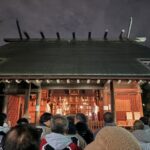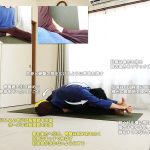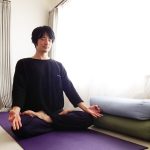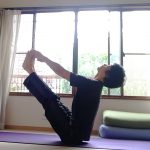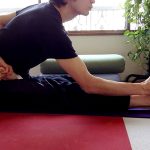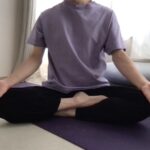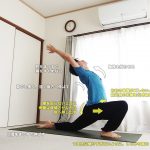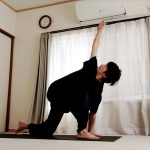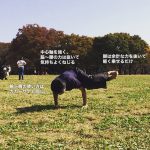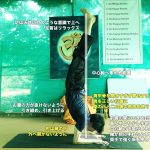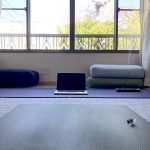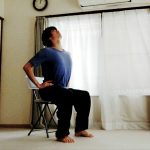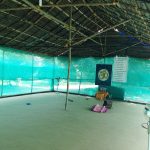「クンダリニー・タントラ/スワミ・サティヤナンダ・サラスワティ著」を読み進めていく形で、クンダリーニヨガ(クンダリニーヨーガ)の概要を紹介していく連載記事です。
「Kundalini Tantra 英語版 ペーパーバック」 Swami Satyananda Saraswati (著)
「Kundalini Tantra 英語版 Kindle」 Swami Satyananda Saraswati (著)
今回は、第3章の10節、ビンドゥ・ヴィサルガ覚醒の行法のやり方に関する部分です。
ビンドゥ・ヴィサルガ自体の詳しい説明は、以下の記事を参考にしてください。
以下、引用部分の太字強調は私が個人的に重要と思ったところを示したものです。
この記事の目次
ビンドゥ・ヴィサルガ覚醒の流れ
ビンドゥ・ヴィサルガは、チャクラとは別のものとして扱われていますが、クンダリニーヨーガにおいて、重要なセンターとして扱われています。
ここまで、アージュニャーチャクラ→ムーラダーラチャクラ→スワディシュターナチャクラ→マニプーラチャクラ→アナーハタチャクラ→ヴィシュッディチャクラという順番で、チャクラの覚醒を1ヶ月ずつ行ってきました。
一般的な7チャクラの理論では次にサハスラーラへ行くように思えますが、サティヤナンダ氏の行法ではここでビンドゥ・ヴィサルガの覚醒の行法を行い、次は全てのチャクラを統合・連動するような行法へ向かいます。
参考:「クンダリニー・タントラ」を読む【37】第2章 10節:サハスラーラ
The bindu visarga trigger point is considered to be a tiny point at the top of the back of the head, but this point cannot be located physically. It can only be found when the nada or sound of bindu has been discovered and traced to its source. Through the practice of moorchha pranayama and vajroli mudra awareness of the nada can be developed. Then, through practices such as bhramari pranayama and yoni mudra, the nada can be traced to its source.
ビンドゥ・ヴィサルガは、後頭部の一番上にある小さな点であると考えられていますが、その位置を物理的・物質的に把握することはできないといいます。
その位置を探すためには、ビンドゥから発せられるナーダ音をたどっていき、その音の源に到達することで可能になると説明されています。
ムールッチャープラーナーヤーマとヴァジローリームドラーの実践によってナーダ音への気づきが磨かれ、ブラーマリープラーナーヤーマとヨーニムドラーの実践によってその音の源をたどっていくことができると説明されています。
It is not intended that you practise all the nada yoga techniques at one time. You should adopt the practice which you can perform without difficulty. It does not matter which practice you commence with, because all the techniques lead to awareness of the same subtle inner sounds.
このようなナーダ音への気づきを磨く実践を「ナーダヨーガ」と称していますが、ナーダヨーガの実践は全ての行法を一度に行う必要はなく、自分にとって難しくないものから取り入れていくように、と指示されています。
どの実践を行っても、内的な微細な音への気づきは磨かれていくといいます。どのように微細な音をたどっていくかは行法3・4で詳しく示されています。行法3・4はやり方は少し異なりますが、どちらも耳をふさぎ、音をたどっていくやり方はほぼ同じで、段階的に微細な音の源をたどっていくような流れになっています。
There is a very close relationship between swadhisthana chakra and bindu visarga. This is because bindu is the point where the primal sound of creation first manifests. It is the point of origin of individuality, and swadhisthana is the source of the impetus towards reproduction and sexual function. This is the material expression of the desire to reunite with the infinite consciousness beyond bindu. Sperm and menses are the material distillates of the drop of ambrosial nectar which emerges from bindu visarga.
スワディシュターナチャクラとビンドゥ・ヴィサルガには密接な関係があり、ビンドゥ・ヴィサルガは原初的な音が最初に生まれた場所であるとされています。そしてビンドゥは個別性(エゴ)が生まれる場所であり、スワディシュターナチャクラは生殖・性機能を推進する力の源であるといいます。
ビンドゥを超えた先には、無限の意識(個別意識の源)があり、これ(「これ」が指すものが若干はっきりしないのですが、スワディシュターナチャクラによって制御される生殖器や精子・卵子、生殖活動といった物質的な表現を指しているのかと思います)はその源へ戻っていくという欲求が物質的に現れたものであるといいます。そして精子と月経は、ビンドゥ・ヴィサルガから湧き出る神秘的なネクター(霊薬)の物質的な現れであるといいます。
これらの話は、第2章のビンドゥ・ヴィサルガの解説でも説明されていましたが、他のチャクラに比べると難解な部分があるかもしれません。また、ビンドゥには対応するクシェートラムは無いと説明されています。
Practise the techniques for bindu visarga for one month. Then begin the techniques given in the next chapter for integrated chakra awareness.
ビンドゥ・ヴィサルガ覚醒の行法は1ヶ月間行い、次にチャクラを統合する気づきのための行法へ向かいます。
その間も、前の項でも示されたように、アージュニャーチャクラ、ムーラダーラチャクラ、スワディシュターナチャクラ、マニプーラチャクラ、アナーハタチャクラに関する行法の中から重要なものを選んで毎日続けるようにします。
ヴィシュッディチャクラの行法に関しては、ジャーランダラバンダ、チャクラの浄化、ヴィパリータカラニーアーサナを引き続き行うべし、と指示されています。ケーチャリームドラーとウジャイプラーナーヤーマは、この節のビンドゥ・ヴィサルガ覚醒の行法にも組み込まれているので、別で行う必要はありません。
行法1:ムールッチャープラーナーヤーマ
ムールッチャーは「気絶」という意味で、半分気絶したような状態を導く、強力なプラーナーヤーマです。
The fainting breath attitude
This practice requires a steady and firm asana – siddhasana is the best. Hold the spine and head upright and relax the whole body. Perform khechari mudra. Inhale through the nostrils with ujjayi pranayama while simultaneously bending the head backward and assuming shambhavi mudra. The inhalation should be slow and deep. At the end of inhalation, your head should lean backward, but not completely. The position of the head is as shown in the diagram. Retain the breath inside for as long as is comfortable, maintaining shambhavi mudra, but keeping the attention at bindu. Keep the arms straight by locking the elbows and pressing the knees with the hands. Fix your whole awareness on bindu.
しっかり安定した坐法(シッダーサナが最適)で坐ります。背骨と頭は直立し、全身をリラックスします。手は膝の上に置き、腕をしっかりのばして支えます。
ケーチャリームドラー(舌を上・後の方へ伸ばしていく)を行います。ウジャイプラーナーヤーマ(喉を少し締めてかすかな音を響かせる)で鼻から呼吸しながら、首を後ろへ反らして、シャーンバヴィームドラー(目を上へ向けて眉間を凝視する)を行います。様々な技法を組み合わせたプラーナーヤーマですが、これらはこれまでのチャクラ行法の中で出てきたものです。
吸う息はゆっくり深く、吸う息の最後に頭を後ろへ傾けますが、完全には傾けないようにします(図のように、斜め上あたりを見上げる形)。
息を止めて可能な限り長く保ちながら、シャーンバヴィームドラーも続け、ビンドゥへ意識を向け続けます。
息が続かなくなったら、腕をゆるめてゆっくりウジャイ呼吸で息を吐きながら、頭はまっすぐの位置へ戻していき、ゆっくり目を閉じていきます。
吐く息の最後で、顔は正面を向き、目は完全に閉じます。
少しの間、体をリラックスして目を閉じたままにしておきます。ケーチャリームドラーを解いて、自然に呼吸します。軽快さと落ち着きが心を覆っていくのに気づきを向けます。
ここまでを1セットとして、10セットかそれより多く繰り返します。または、気絶するような感覚を経験するまで続けます。
力まないように、ひとつひとつのセットをできるだけ長く行います。
Note: Not for sufferers of high blood pressure, vertigo, high intracranial pressure or brain hemorrhage.
* You should practise until a state of semi-fainting is induced. If you go beyond this sensation you may become unconscious.
* This practice is very powerful in inducing pratyahara and rendering the mind free from thoughts, especially when kumbhaka is prolonged.
禁忌・注意点がまとめられています。高血圧、めまいのある人、頭蓋内圧の高い人、脳出血のある人は行わないようにします。
半分気絶したような状態が起こるまで続けます。それを越えて行うと、無意識状態になってしまうので注意が必要です。
この行法はプラティヤーハーラ(制感)、心を思考から解き放つことに非常に有効であり、とくにクンバカ(止息)を長くすることができたときに効果が高まります。
行法2:ビンドゥへの気づきを伴ったヴァジローリームドラー
スワディシュターナチャクラの行法でも紹介された、ヴァジローリームドラーが再び登場します。ビンドゥとスワディシュターナチャクラが関係深いというのは先に説明されていました。
ヴァジローリームドラーは、シッダーサナ(男性)またはシッダヨーニアーサナ(女性)で坐り、目を閉じてリラックスします。性器を引き上げるようにして下腹部と泌尿器系周辺の筋肉を収縮します。これは小便を途中で止めるのと同じ筋肉の収縮です。
10秒間収縮し、10秒間ゆるめ、これを繰り返します。
Each time you attain full contraction of the urinary and reproductive systems, bring your awareness to swadhisthana chakra in the spinai column, at the level of the coccyx. Repeat,’swadhisthana, swadhisthana, swadhisthana’, mentally. Then draw your awareness up through sushumna passage to bindu visarga, uniting the sexual and reproductive energy with its source in bindu. Mentally repeat, “bindu, bindu, bindu”. Then return to swadhisthana and release vajroli mudra. This is one round. Continue this alternately for several minutes, practising up to 25 rounds.
毎回しっかりと完全に収縮するようにし、意識は尾骨の中にあるスワディシュターナチャクラへ向け、頭の中で「スワディシュターナ、スワディシュターナ、スワディシュターナ」と唱えます。
そして意識をスシュムナーを通してビンドゥ・ヴィサルガへ向け、スワディシュターナチャクラにある性的エネルギーが、その源であるビンドゥ・ヴィサルガへ至って結合するようにイメージします。頭の中で「ビンドゥ、ビンドゥ、ビンドゥ」と唱えます。
意識をスワディシュターナチャクラに戻し、ヴァジローリームドラーを解きます。
ここまでを1セットとして数分間行い、だんだん数を増やしていき25回まで行います。
Note: This practice should be performed immediately after moorchha pranayarna, as both these practices awaken the awareness of bindu.
この行法は、ムールッチャープラーナーヤーマの直後に行うことで、どちらもビンドゥへの気づきの覚醒を導くといいます。
行法3:内なる微細な音への知覚
This practice should be preceded by bhramari pranayama. In this stage no loud humming sound is produced, you only listen attentively to the inner sound. You should keep your eyes closed and your fingers in your ears; this is necessary to block out external disturbances.
この行法は、アナーハタチャクラの覚醒法で出てきたブラーマリープラーナーヤーマをベースにして行います。
この段階ではハミング音を出す必要はなく、目を閉じて指で耳をふさぎ、内的な音を聴くことを目的とします。
Listen for any subtle sounds within your head. At first you may find this difficult, but keep trying. As soon as you become aware of a sound, any sound, try to fix your awareness on it to the exclusion of other sounds. Go on listening. After some days or weeks of practice, you should find that one sound is very distinct, and it will become louder and louder. Be totally aware of that sound. This is your vehicle of awareness – let your awareness flow towards this sound, leaving all other sounds and thoughts.
頭の中に響く微細な音を聴こうとしていきます。最初は難しいかもしれませんが、やろうとし続けているうちに、音に気づき始めます。どんな音だったとしても、その音に気づきを集中し、他の音には意識を向けないようにします。
数日か数週間の実践の後、とても明確に響くひとつの音に気づき、それはだんだん大きく聴こえるようになっていきます。
その音は「気づきの乗り物」として機能し、他の音や思考に惑わされずに気づきを働かせることができるようになっていきます。
Gradually, through practice, your sensitivity will increase. Eventually you will hear another sound, a faint sound in the background; it will be almost obliterated by the main, louder sound that you are hearing, but you will hear it nevertheless. You should now listen to the new faint sound. Leave the other louder sound and continue to listen to this new sound. It will become more and more distinct. This will become the new, more subtle vehicle of your awareness. Let this sound occupy your whole attention. This will further increase your sensitivity of perception.
実践を続けるにつれて、だんだんと感覚が磨かれていき、別のかすかな音が背景に響いていることにも気づくようになります。この音は、いままで主に聴こえていた大きな音によってほとんどかき消されそうになりますが、それでも確かに聴こえるようになっていくといいます。
その新たな微細な音を聴くことに意識を向けていきます。いままで聞こえていた大きな音には意識を向けないようにします。
すると、その音はより明らかに聴こえるようになっていきます。これはまた新たな微細な気づきのための乗り物となり、この音に意識をひたすことによって、さらに繊細な感覚を磨いていくことができるようになるといいます。
Eventually you will hear another faint sound emerging from behind this louder sound. Fix your awareness on this new sound, discarding the other sound. Continue in the same manner, allowing the new sound to occupy your whole awareness. When it becomes loud, try to perceive a more subtle underlying sound and fix your awareness on it. In this manner your perception will become progressively more sensitive, allowing you to dive deep into your being.
最終的に、さらに微細な音が、いままでの大きな音の背後から現れるのを聴くことになります。他の音へ意識を向けず、その新たな音に意識をひたします。
それによってさらに微細な次元への気づきが磨かれ、存在の深みへと潜っていき、根源的な気づきへ至ることができるといいます。
Note: It requires practice over a period of weeks and months to perceive these progressively more subtle sounds. For many weeks you may be unable to hear even the first sound.
* This is a very simple but powerful technique that will bring results if you persevere. All that is necessary is time and effort. Try to practise for as long as you have time. In the beginning, devote 15 minutes or more to bhramari and this practice together.
この行法は数週間や数ヶ月行い、より微細な音が聴けるようにしていきます。そのとき、最初に聞こえていた音は聞こえなくなっていくであろうと説明されています。
これはシンプルですが強力な行法であり、根気よくやり抜くことで、必ず結果をもたらすといいます。時間と努力だけが必要であり、時間の許す限り長く実践するようにし、最初のうちは15分かそれ以上の時間を費やして行うようにと指示されています。
やっていることは同じですが、ここでは明確に「いくつかの段階を伴って、だんだん微細な音が聴こえるようになっていく」という描写があります。新たな微細な音が聴こえるようになってきたら、いままでひたっていた音には執着せず、新たな音へ集中するようにしていくということです。
行法4:ヨーニムドラー
The invocation of the source
Sit in any comfortable meditative asana, preferably siddhasana. Completely relax the body and mind. Bring the hands in front of the face, with the elbows pointing sideways. Hold the spine and head upright. Close the ears with the thumbs, the eyes with the index fingers, the nostrils with the middle fingers and the mouth with the ring and small fingers placed above and below the lips respectively. The fingers should gently but firmly close the seven doors. Throughout the practice, the middle fingers should release the nostrils during inhalation and exhalation. Now inhale deeply and slowly. At the end of inhalation, close the nostrils with the middle fingers and retain the breath. Try to hear sounds emanating from bindu at the back of the head, from the middle of the head, or perhaps the right ear.
快適な瞑想に適した坐法で坐ります。体と心を完全にリラックスします。
手を顔の前にもってきて、肘を横に張って曲げます。顔はまっすぐ正面を向いたまま、親指で耳をふさぎ、人差し指で目をふさぎ、中指で鼻をふさぎ、薬指と小指で口を上下からはさんでふさぎます。指は強くおさえることなく、しっかり7つの門(両目・両鼻・両耳・口)をふさぎます。息を吸う時と吐く時は、中指は離して鼻から呼吸します。
深くゆっくりと息を吸い、吸い終わるときに中指で鼻をふさぎ、息を止めます。
息を止めたまま、ビンドゥ・ヴィサルガ、あるいは頭の真ん中、または右耳から聴こえる音に、意識を向けます。
そこから、聴こえる音と集中対象の移し方については、行法3と同じのようです。だんだんと微細な音へ気づきを向けていきます。
Breath retention: This technique is more effective if you can retain your breath for extended periods of time. Those aspirants who have been practising nadi shodhana pranayama regularly for some months beforehand, will find yoni mudra an easy and effective means of introspection.
息を長い時間とめていられるようにすると、より効果が高まるというのも他の行法と共通しています。ハタヨーガの技法では、やはりクンバカ(止息)が重要な要素として扱われることが多いです。
事前にナディショーダナ・プラーナーヤーマを数ヶ月実践しておくと、ヨーニムドラーは容易で効果的な内的知覚の行法となるであろう、と示されています。
Awareness: The point of awareness during the practice should be fixed at the back of the head in the bindu region. However, if you hear a distinct sound in any other area, such as the right ear or the middle of the head, then your awareness should be fixed there.
ヨーニムドラーを行っている間、ビンドゥ・ヴィサルガへ意識を置き続けます。しかし、確かな内的な音がビンドゥ以外のエリア(たとえば右耳や、頭の真ん中)から聞こえた場合、そこに意識を集中するようにします。
Some people may find it easier to listen to the nada in the region of the heart space (anahata chakra), especially those of a devotional nature. The important thing is not so much the point of awareness, but that the awareness remains fixed on progressively more subtle sounds. Total absorption on the nada can lead to dhyana or the meditative state of awareness.
ナーダ音を、ビンドゥではなく心臓の領域(アナーハタチャクラ)の中で聴くことを比較的容易だと感じる人々もいるようで、特に献身性の強い人に多いようです。
アナーハタチャクラ覚醒法の項でも、こういった霊的な音の話や、献身が関係しているという話はよく出てきました。
参考:「クンダリニー・タントラ」を読む【45】第3章 8節:アナーハタチャクラの覚醒方法
ビンドゥか心臓か、どこに集中するかはそれほど重要ではなく、段階的に聞こえてくる微細な音へ気づきを向け続けることが重要であるといいます。
このナーダ音に完全に没入することによって、ディヤーナ(瞑想)の意識状態に至ることができると説明されています。
次記事:「クンダリニー・タントラ」を読む【48】第3章 11節:各チャクラの覚醒と統合
前記事:「クンダリニー・タントラ」を読む【46】第3章 9節:ヴィシュッディチャクラの覚醒方法
参考文献
「Kundalini Tantra 英語版 ペーパーバック」 Swami Satyananda Saraswati (著)
「Kundalini Tantra 英語版 Kindle」 Swami Satyananda Saraswati (著)
「クンダリニー」ゴーピ・クリシュナ (著), 中島巌 (翻訳)
「Asana Pranayama Mudra Bandha 英語版」Swami Satyananda Saraswati (著)

